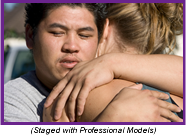
a. Rookies covering crime and breaking news
b. Photographers and videographers have special responsibilities
c. Editors can introduce problems
d. "Pack Journalism" puts pressure on victims
e. News values can conflict with victim priorities
f. Improving cultural competency
g. Anyone can cover anything
h. Is it time to reconsider sharing stories prior to publication
i. A focus on the perpetrator
j. Lack of opportunities to hold reporters and editors accountable
Other Considerations with Act I Stories
There are additional factors that affect the reporting of Act I crime stories:
a. Rookies cover crime and breaking news. Although most TV journalists are general assignment reporters who cover a variety of stories including crime, newspapers have traditionally assigned one or more reporters to the “crime beat” or to “cops and court reporting.” In many cases, especially in smaller markets, it is rookie reporters who are assigned to cover crime. In part, young people get these assignments because they often require working nighttime hours, visiting neighborhoods with high crime rates, and venturing out in inclement weather. It also means dealing with victims who may be distraught and in physical pain.
As reporters gain seniority, they often ask to move into less stressful and more prestigious assignments. Unfortunately, news organizations rarely offer rookies training about reporting on victims of violence and many did not receive specialized instruction before entering the field. Lack of training and inexperience can mean that they make mistakes that add to the stress of the job and the likelihood they will experience secondary trauma (see “Self Care for Journalists”). News organizations would be well advised to use this guide as a foundation for training rookies.
b. Photographers and videographers have special responsibilities. On the one hand, it is important that news organizations do not sanitize the impact of criminal violence in our culture. However, on the other hand, sensational or grisly images often wound victims and their families and friends without informing the public, many of whom are repelled. Although the moving images on television have tremendous emotional impact, they are ephemeral. Still photograph in print or on the Internet can have as much or more impact, since they serve as a permanent record of a specific moment in time. Another problem is that news organizations often rely on visual clichés that have lost their meaning except for the pain they inflict on victims. The body bag on the gurney going into the back of the ambulance or the coffin being lowered into the ground does not mean much to the average reader or viewer, but such images can be particularly painful to victims.
c. Editors can introduce problems. People outside the news business often hold reporters accountable for decisions that were made by the editors. For example, many victims report that the headline bothered them the most because it was too sensational, misleading, or flatly wrong. At most newspapers and magazines, copy editors write the headline, not the reporter. Copy editors also change parts of stories, sometimes without conferring with reporters, which can result in errors or insensitivities. In larger television stations, editors, not reporters, edit the video. Perhaps because they are often insulated from direct feedback from victims, they can be more likely to edit the images in ways that victims find offensive, either by showing gore or focusing on victim anguish. It is best to ensure that the system allows reporters who cover victims the opportunity to check headlines, corrections, and changes before the stories are aired or published.
d. “Pack journalism” puts pressure on victims. Crime victims have had their lives torn apart or at least disrupted. So confronting a horde of journalists outside their home is an unwelcome added stress. If staking out the victim’s home is unavoidable, news organizations should exercise special care to ensure their reporters’ presence does as little as possible to burden the victims. One possible solution in such a case is for the media to select a “pool” of their representatives who can conduct an interview and, under the agreement of the media members, share the information with the larger group of journalists.
e. News values can conflict with victim priorities. Some of the values that journalists have long held dear can pose problems for victims, their families and friends, and the victim advocates and service providers who work with them.1 1. Ken Blake, “Understanding the news values,” Middle
Tennessee State University, http://www.csuchico.edu/~sbrockus/260/reading/
newsValues.htm, accessed March 30, 2007. (See footnote
at bottom of page to activate link.) Three in particular include—
- Speed. News organizations, both national and local, compete to get the story first. Not only does the pressure for speed risk pushing reporters to become aggressive in pursuing victims, but rushing also increases the risk of error. Surveys show that readers and viewers value accuracy above speed.

- Prominence and celebrity. If the mayor’s daughter is murdered, the story will almost always appear on the front page of the newspaper and lead the television newscasts on all local stations. However, crime victims who are not as prominent may not find themselves or their loved ones on the front pages and sometimes the crimes are not covered at all. This is particularly worrisome because it often works to the detriment of minorities and others who have faced unique obstacles and unfairness in attaining power and wealth.
- The “weirdness” factor. The adage is that “dog bites man” is not news, but “man bites dog” is. Reporters often look for the odd or unusual detail to include in their stories, so that it stands out from the rest. Unfortunately, this can translate into reporting grisly, unique, or intimate facts about the crime that can make victims feel revictimized. A good test is whether you would report the same detail if the victim were a member of your family.
f. Improving cultural competency.
As the issue of prominence and celebrity above reminds us, news organizations continue to struggle with issues of diversity. Though print and broadcast newsrooms have made strides in recruiting women and minorities, declines in revenues threaten to reverse those trends and both groups continue to be underrepresented in media management.2 2. ASNE (American Society of Newspaper Editors), “Diversity in Newspaper Newsrooms,” http://www.asne.org/article_view/articleid/763/decline-in-newsroom-jobs-slows-763.aspx, accessed March 30, 2007 and The Radio and Television News Directors Association, “Newsroom Diversity Project,” http://www.rtnda.org/pages/media_items/newsroom-diversity-projects444.php, accessed March 30, 2007. (See footnote on bottom of the page to activate link.)
Although it is important that people who are interviewed find a face in the newsroom that looks like theirs, the biggest challenge may be to include people from all walks of life. Newspaper reporting was once a blue-collar job filled with people who came from the community. At today’s media companies, almost all new hires have a bachelor’s degree and many have high-tech skills as news migrates to the Internet. News organizations can teach reporters and editors specifics they need to know about diversity. (For example, it is considered rude in most Asian cultures to look people in the eye, and Muslim women who wear the hijab may resent being asked about it.) However, a bigger challenge may be to help reporters from upscale backgrounds connect with victims in low-income areas. Unless reporters can learn how to bridge the cultural divide, crime victims can feel marginalized, patronized, or worse.
g. Anyone can cover anything. Many news organizations want reporters who can cover anything, with little or no time spent in preparation. Yet many people, including reporters, simply do not know much about crime and victimization. Reporters can therefore grow up believing myths or half-truths concerning certain kinds of crimes without realizing that the information is erroneous and that it has the potential to bias their coverage and inflict pain on victims. News organizations should consider training reporters who cover victims on how to do so with sensitivity, compassion, and respect. Schools of journalism should also incorporate this instruction into their curriculum so that all future reporters and editors receive this training.
h. Is it time to reconsider sharing stories prior to publication? Some news organizations allow reporters to verify quotes with their sources, but have a hard-and-fast rule against allowing people who were interviewed to see copies of the entire story prior to publication. The problem this poses with victim coverage is that even minor mistakes or a particular use of language can cause victims pain. For the families and friends of homicide victims, for example, even the smallest miscue is painful because it may well serve as the final record of their loved one’s life.
It is also possible to give offense without realizing it when reporting on sensitive issues such as rape and incest. In many news organizations, this rule no longer is absolute, especially when the news medium is dealing with average citizens rather than public officials or public figures for whom there is a higher likelihood of trying to “spin” the story. Many award-winning reporters privately admit that they have given victims an advance look at their stories. Many also admit that this allowed them to make minor changes that helped victims without compromising the coverage. News organizations and journalism educators might want to reconsider whether the policy should be amended when dealing with crime victims.
i. A focus on the perpetrator. People have long been fascinated by crime and violence and the people who commit heinous acts. Why do they do it? What kind of people are they? A high-profile case often results in higher circulation and ratings. For victims and their families and friends, this emphasis on the perpetrator can be repugnant. Equally or more disturbing to victims is when family or friends are quoted making positive comments about the perpetrator. The challenge for reporters and editors is to find ways to make stories about victims equally compelling.
j. Lack of opportunities to hold reporters and editors accountable. When victims have complaints about aspects of their coverage, they may not know who is responsible—the reporter, the photographer or videographer, or an editor somewhere in the chain of command. Sometimes the only redress available is writing a Letter-to-the-Editor. However, there is no assurance the letter will be published, or it may be edited in ways that can change its meaning or emphasis. The section on victim advocates, service providers, and citizen volunteers offers proactive strategies to build mutually beneficial lines of communication.

Reporters and editors can suffer from secondary victimization. Like other first responders (police, fire, emergency medical personnel), reporters often see disturbing and gruesome scenes that most people never confront. Interviewing people in trauma can also take a toll. All too often as well, news organizations do not recognize the impact that photographers, videographers, and reporters suffer. Left unaddressed, journalists risk falling prey to unhealthy coping strategies such as self-medicating with alcohol and legal and illicit drugs. Reporters can also become hardened and cynical, in the hope that a tough exterior will protect them from the pain. All too often instead, it merely makes them insensitive to others. Another common coping technique is employing so-called “gallows humor” to distance themselves from victims’ pain. As this suggests, however, such mechanisms can make it difficult for journalists to remain sensitive to victim issues and concerns. News organizations should foster a culture where journalists feel comfortable talking about their feelings about doing tough stories. News organizations should also offer support and counseling to employees who need help dealing with secondary trauma without fear that doing so would harm their careers (see “Self Care for Journalists” in this Section).
2. ASNE (American Society of Newspaper Editors), “Diversity in Newspaper Newsrooms,” http://www.asne.org/article_view/articleid/763/decline-in-newsroom-jobs-slows-763.aspx, accessed March 30, 2007 and The Radio and Television News Directors Association, “Newsroom Diversity Project,” http://www.rtnda.org/pages/media_items/newsroom-diversity-project444.php, accessed March 30, 2007.






